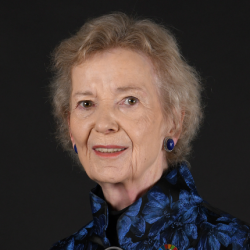How to create the change we want?
“The Elders' generation got agreements signed and solutions designed. But let’s be honest here: most actions for sustainable development are cosmetic, ignorant or thwarted.” 27-year old Swedish activist Sara argues for a more radical approach. Exactly one month before Rio+20, she asks how we can make the most of this moment; what lessons we can learn from the Arab Spring and Occupy; and whether it's possible to bridge the gap between the UN and the grassroots movement. Mary Robinson, Marvin Nala from China and Pedro Telles from Brazil respond.
We live in an era of transformative change, and have come to a point when change is not a choice. To change or not to change – that is not the question. An ever-growing number of people realise that if we don’t transform, we will be transformed.
The only way to impede devastating change is by implementing desired change. But how do we move from this insight to actually make it happen?
The Elders' generation got agreements signed and solutions designed. But let’s be honest here: most actions for sustainable development are cosmetic, ignorant or thwarted. We are told that we need to trust the United Nations, since it’s the only kind of global governance we have. We are told that we must be realistic, pragmatic and patient, since the right conditions for consensus are yet to come. We are told that solutions exist and it’s just a matter of political will.
How much more precious time are we supposed to lose while waiting?
If politics is the art of what is possible, we must redefine pragmatism and expand the room for action. The art of changing what is possible is called 'activism'. But activism can take multiple forms, and is not automatically effective. I believe that we must start calling for change in much more radical ways and to a much greater extent than what the world is used to. If the time for ‘business-as-usual’ has passed, so has the time for ‘politics-as-usual’ and ‘activism-as-usual’.
“The only way to impede devastating change is by implementing desired change. ”
On 18 December 2009 in Copenhagen, Denmark, the UN Summit on Climate Change concluded without the international commitment so desperately needed. The following morning I was sitting around a candle with a small circle of friends. A bunch of journalists from around the world watched in silence and took photos as I slowly, slowly drank a juice. I could feel the energy from the juice moving through my body, all the way out in my fingertips. For the past 43 days I had been eating nothing and drinking only water. My hunger strike was an urgent call for climate justice and sustainability.
On Christmas Eve, less than a week after these climate negotiations turned the United Nations into the Divided Nations, the UN General Assembly passed a resolution to organise the UN Conference on Sustainable Development in 2012. Preparations for Rio+20 have been going on over the past two and a half years since then. With less than a month left to the summit, it is obvious that once again negotiations are moving too slow and with far too little ambition to secure a sustainable and equitable future for all.
I still believe that Rio+20 is a crucial moment in history, and we should seize all opportunities there are to use it for creating the change we want. We can encourage everybody to join the Rio+20 Dialogues and make voluntary commitments. We can also use this moment to plan for what will happen after Rio, regardless of the political outcomes. How can we do that – and what else do you think we need to do?
Over the past year and a half, I’ve been watching the peaceful uprisings of the Arab Spring and the Occupy Movement in solidarity and with hope. It is a sign that the social movement for positive change is growing. It manifests how new technologies and social media can be used as tools for organising and mobilisation. What lessons can we learn and apply to the sustainability movement?
In addition to the official UN events in Rio, the alternative People’s Summit will take place. I’m standing with one leg in the UN and the other in the grassroots movement. Is it possible to bridge the gap between the two?

